Chickpea flour, ghee and sugar three ingredients that give us some of the most soul-soothing, heartwarming and magical regional Indian sweets. These three thrive in each other’s company and their harmonious co-existence has the capacity to melt our heart, make us weak on knees or shatter those pledges of self discipline. Isn’t it? Besan ke Laddu, Besan ki Burfi, Besan ka Halwa, Boondi ke Laddu, Mohanthal, Magaz, Mysore Pak are some fine examples of their harmonious coexistence.
Chickpea flour has been central to Gujarati cuisine where it heroes in many of our mishtan (sweets) and farsan (savouries). In the days of the yore, sugar was dearer and sweetened the foods and lives of aristocrats and wealthy while the commoners always had jaggery to do the honours. Ghee, on the other hand, has been a luxurious necessity. Today, the booming dairy industry does make the availability of ghee easy however it hasn’t altered its affordability. Foods made with pure ghee enjoy a revered position. Most Gujarati Mishtan are rich in ghee, thus making them an occasional indulgence. The ones made frequently aren’t very ghee rich. Hence, when it comes to sweets like Mohanthal and Magaz, the sweets made with those three magical ingredients – even their mention signifies that some special times are round the corner. Mohanthal is an exquisite, grainy textured, melt in mouth mithai which has been an integral part of Gujarat’s traditional feasts, especially the weddings. It is a rich preparation that uses equal parts of ghee, flour and sugar infused with saffron for colour, cardamom for aroma and decked up with the quintessential Gujarati mishtan garnish Charoli/chironji with occasional addition of slivered almonds and pistachios added for that avoidable extravagance. Believed to be a favourite of Lord Krishna, Mohanthal is also a frequent offering at Vaishnav Havelis (temples) and homes. The changing times and tastes have influenced our preferences making the appearance of Mohanthal on the menus a rarity nonetheless, it remains a classic we aren’t prepared to ignore as yet.
A true labour of love, preparing Mohanthal needs patience and experience. No shortcuts (the Dhabo/Dhrabo is a very important step) and no skimping on ghee or sugar. I have loved a good Mohanthal, perfectly roasted and granular textured slices that I keep reaching for until the bottom of the tin begins to show up (in case of chutto/lose Mohanthal). My quest for a perfect recipe brought me to my backyard or should I say front-yard. My maternal home has a 60-year-old farsan shop at its front yard. They make the best samosas in town. Sarika and Bhabhiji informed they also make excellent Mohanthal. On my request Gaman, their head cook came over to teach the tips and tricks to a perfect Mohanthal.
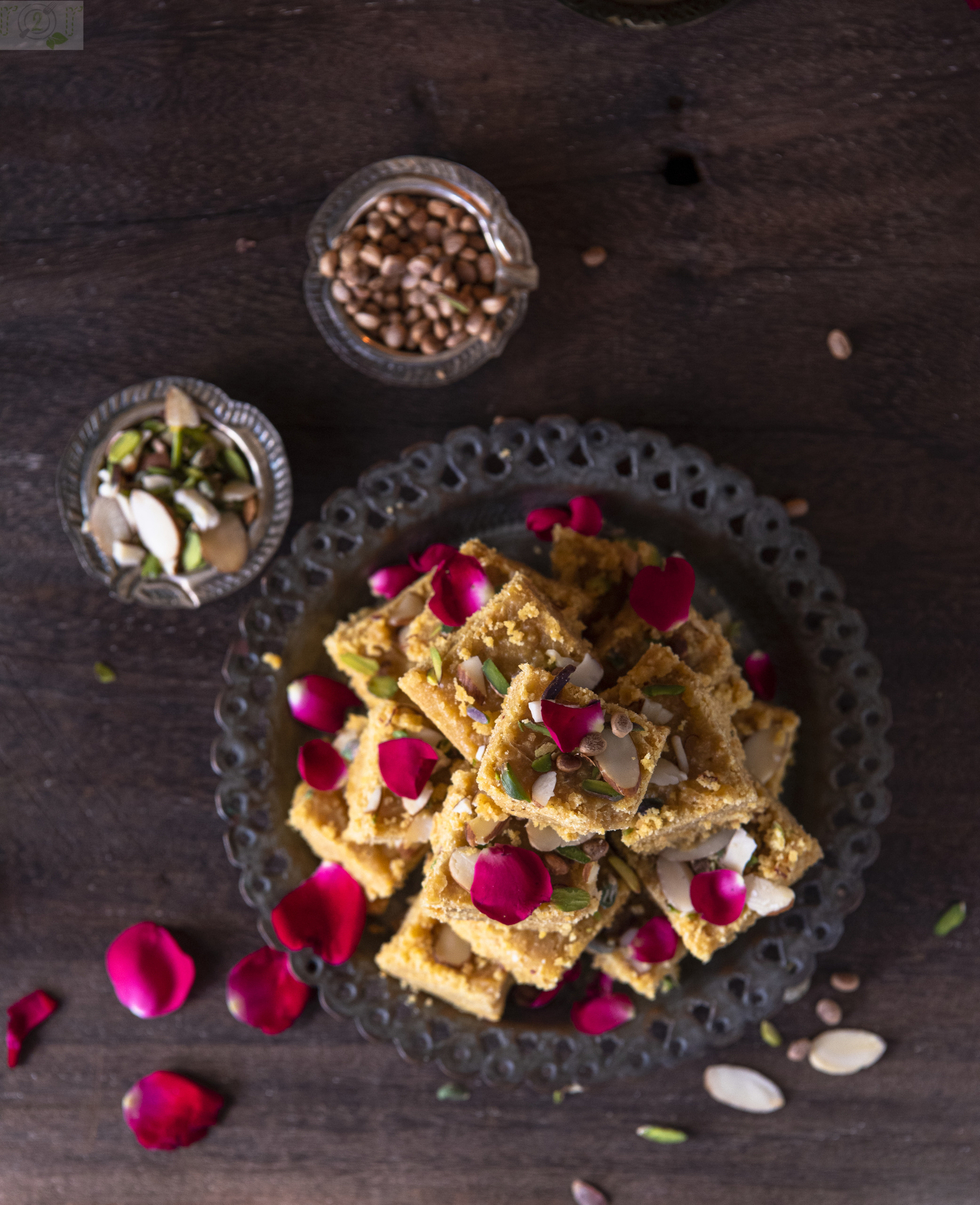
I have made and attached a detailed video of Gaman making the Mohanthal. The tips he shares are:
- Warm ghee and milk should be used to moisten the flour for Dhabo/to laminate the flour.
- If you use cold milk and ghee you will not get the quintessential grainy texture.
- Both the liquids (ghee & milk) should moisten the flour well, it should clump in small clusters.
- Use a large holed sieve to pass the laminated flour.
- The flour should to be roasted in ghee until it turns light-brown/almond skin colour.
- Once the flour has been well roasted transfer it to another bowl or else the heat of the warm vessel will keep cooking the flour.
- The sugar syrup has to be under two thread consistency. If you overcook the syrup do not worry. Add little water and cook a little more to achieve the right consistency.
- You can correct stiffer sugar syrup but can never rectify underdone syrup.
- Never be in hurry transfer the Mohanthal to thaali/pan. Let it cool in the karahi/wok it has been cooked. The Mohanthal will absorb all the syrup and ghee as it cools. Only after it has cooled completely (3 hours at least) you should transfer the content in greased pan and slice only after it has set/stiffened up.
- The Mohantal should be spread thick and not thin. They are cubes and not slices (of joy 😍).
- “When you have used pure ingredients the end result is bound to be excellent,” says Gaman. ☺️
So need not worry. Watch the video, see how Gaman tests the doneness of syrup on a spatula, that is the key. Now go make some Mohanthal with confidence.
Hope this helps.
❤️

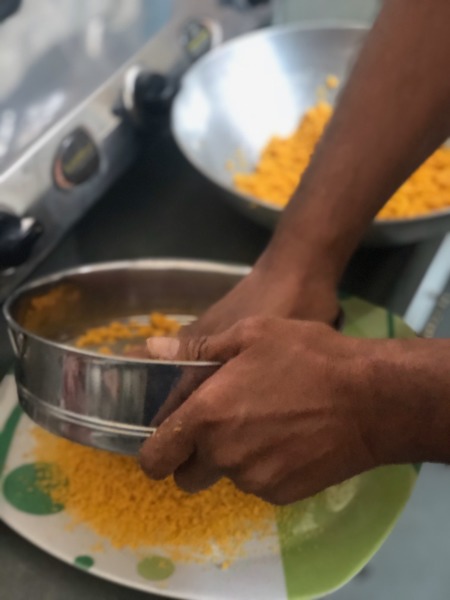
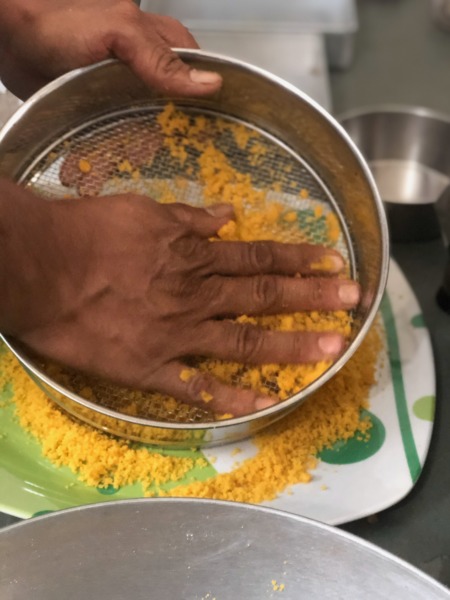
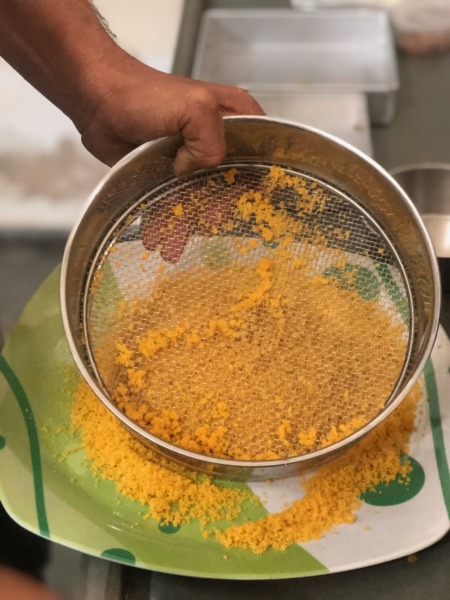
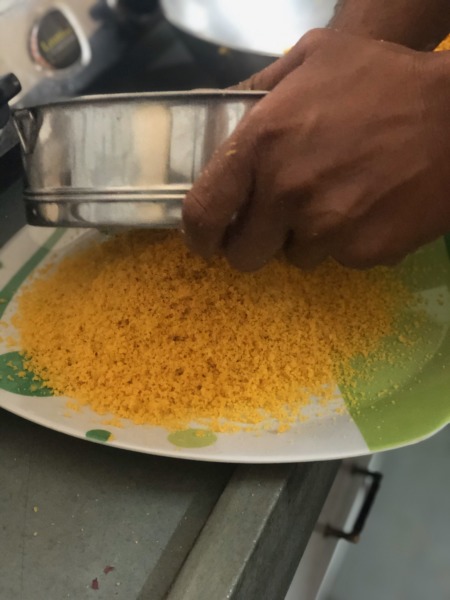
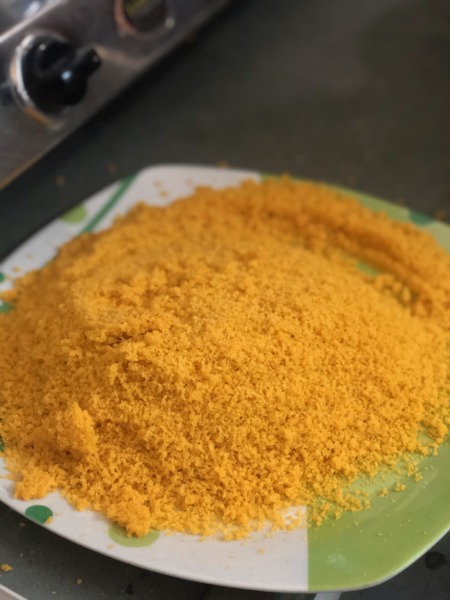
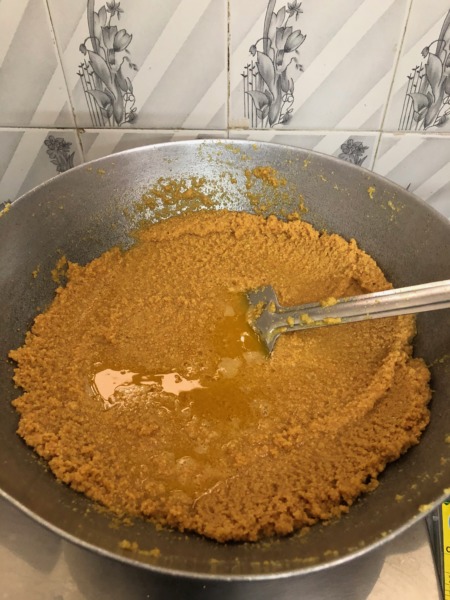
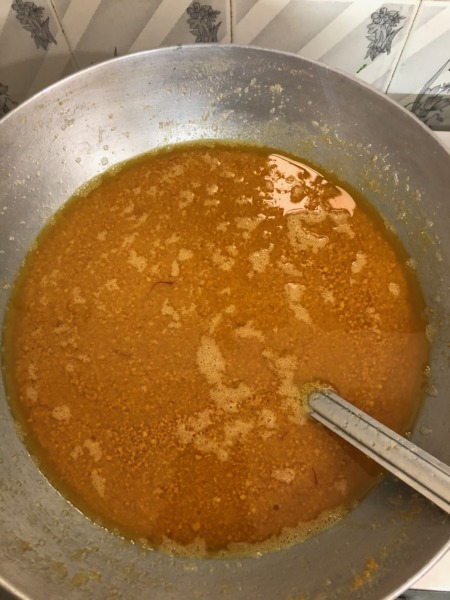
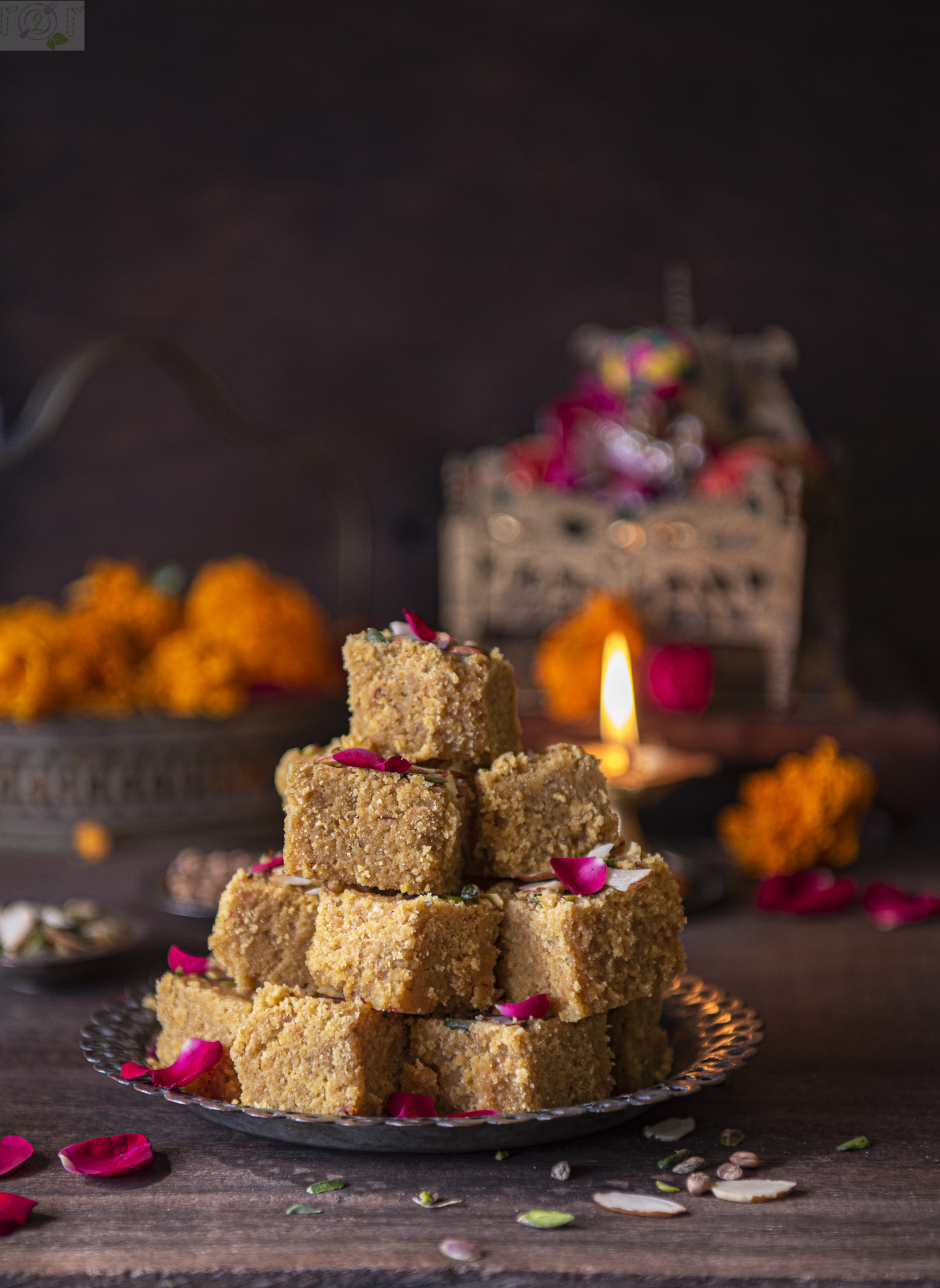
Mohanthal
Ingredients
- 500 grams ghee
- 500 grams coarse chickpea flour/ladoo besan
- 500 grams sugar
- 100 ml milk, warm
- 1+1/3 cup water
- 2 teaspoons saffron strands soaked in 2 tablespoons milk
- 1/2 cup sliced almonds, pistachios
- 2 tablespoons charoli/chironji
Instructions
In a large, thick karahi/wok heat the ghee.
Turn off the flame.
Take a large bowl or Karahi/wok take the flour, add warm milk and couple of ladles of hot ghee.
Mix it with hands. The liquids have to coat the flour well. This step is called Dhabo devo/ meaning laminating the flour.
Now take a large thali/dish and large holed sieve. Pass the flour through the sieve.
This step ensures the trademark granular texture.
Turn on the flame of ghee filled wok and add the flour.
Fry the flour until it turns pale brown/ almond skin colour. The stove flame has to be medium to low.
Form tight it will turn into lose wet sand like consistency.
Turn off the flame once the flour is roasted well.
Transfer the contents to a large bowl.
In the same karahi you have used to cook the flour, make the sugar syrup.
Add sugar and water.
Cook till it reaches 1.5 thread consistency.
Once the sugar syrup is done, add the roasted flour. Mix well and allow it to cool completely.
The wet looking Mohanthal will absorb all the ghee and syrup and turn thick and grainy.
It takes over 2 hours for Mohanthal to cool down completely.
Once cooled completely, ransfer to prepared pans and slice it only after it has set will.

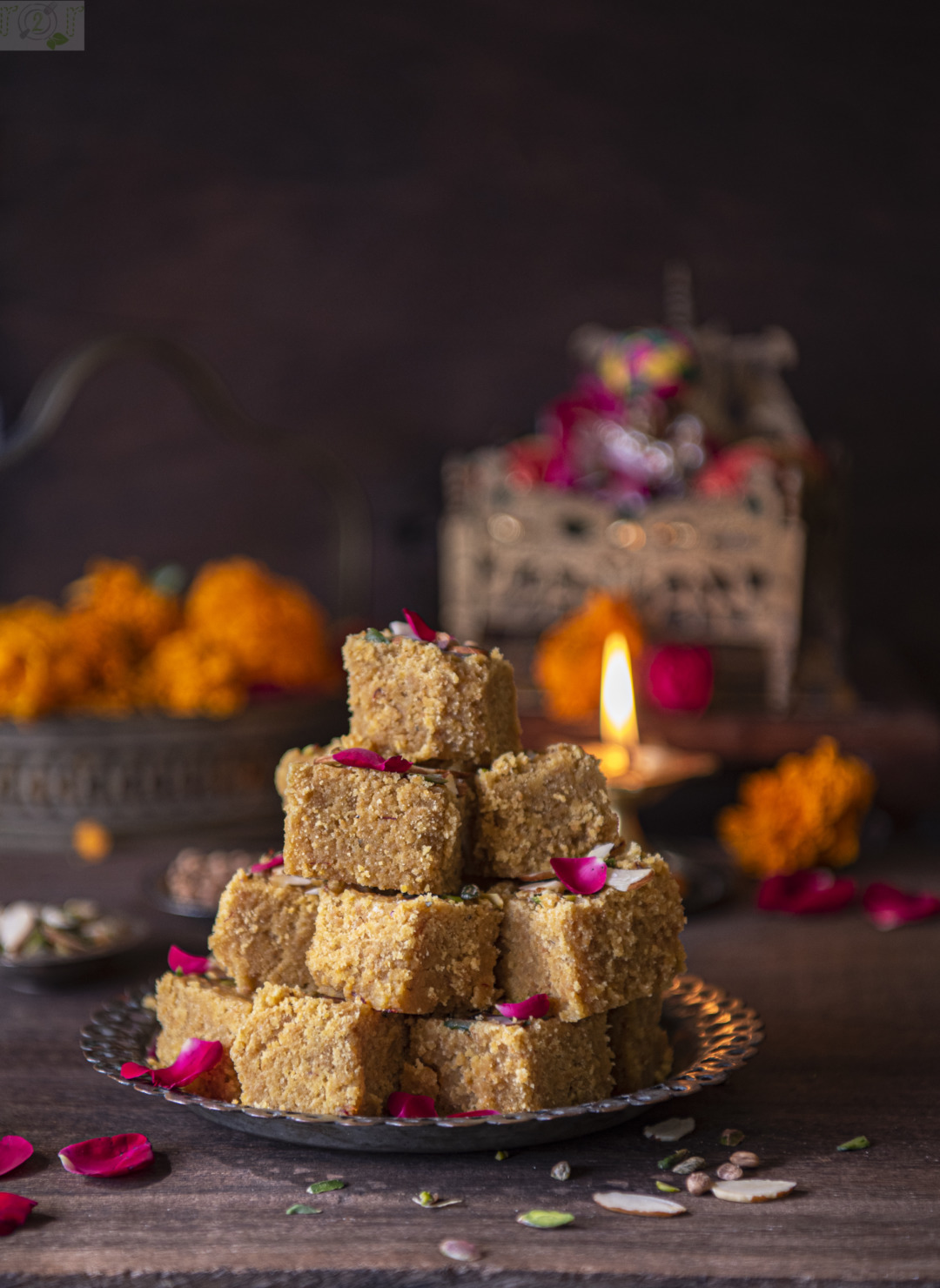

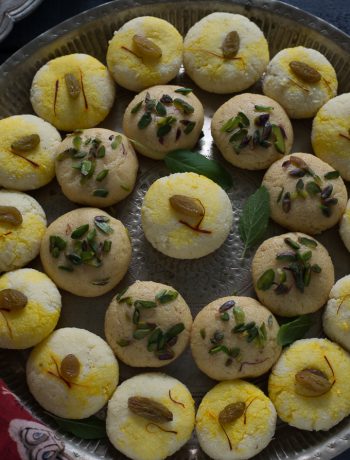
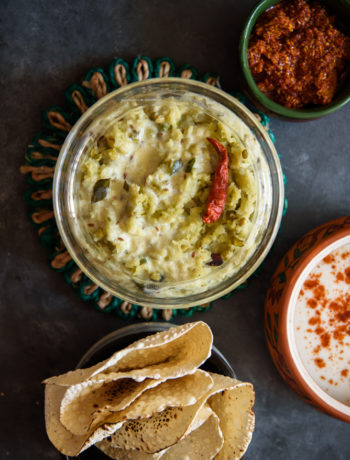
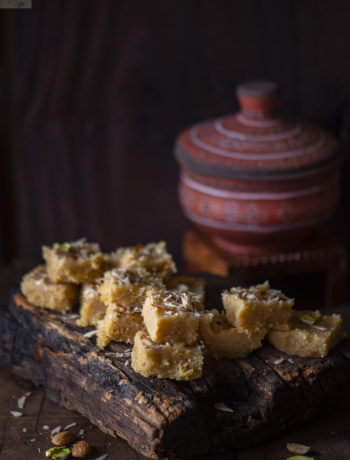
No Comments